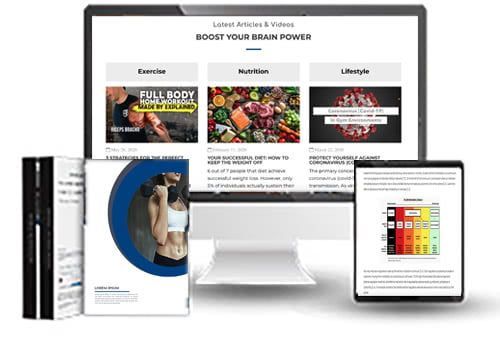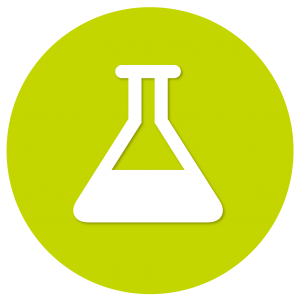
YOUR FITNESS BLOG
What Is The Science Behind Muscle Building?
Introduction
Muscle building is an objective shared by both male and females that engage in resistance exercise (i.e. free weights, cable pulleys, resistance machines). It is well accepted that the process of muscle growth involves the signalling of anabolic pathways that promote protein synthesis (building of new muscle protein) and prevent muscle breakdown [5].
Current research indicates that three primary mechanisms are involved in the muscle building process [5, 7]. These mechanisms include mechanical tension, metabolic stress and muscle damage [7]. A basic understanding of these mechanisms can help to inform exercise programme design to maximise muscle growth.
Mechanisms of Muscle Building
Mechanical Tension
Prevailing research indicates that mechanical tension is the primary driver of muscle hypertrophy [7]. Mechanical tension relates to the force and stretch generated by muscles during resistance exercise [7, 8]. During weight lifting, muscle tension develops when the weights are lowered (eccentrically), which in turn increases the tension on the contractile components of muscle (actin and myosin), resulting in a hypertrophic response [7].
Also, muscle tension during resistance exercise has been shown to interrupt the integrity of the working muscles [5]. This interruption brings about mechanical and chemical signals in the muscle that activate anabolic pathways and promote muscle growth [7]. Greater muscle tension achieved by increasing the load lifted can elicit a stronger anabolic stimulus [7]. However, an upper threshold exists whereby continually increasing tension will have diminishing returns (i.e. overtraining) [5].
From a practical application standpoint, utilising a repetition range of 1 to 5 repetitions and loads of 90 to 100 percent of 1-repetition maximum (1RM) would be appropriate to enhance mechanical tension [5]. Training in this lower rep range and with heavier weights will generate improvements in strength as the nervous system becomes better coordinated and synchronised [5].
Metabolic Stress
Metabolic stress manifests as a results of metabolites that build up in the bloodstream from resistance training [5]. These metabolites include lactate, hydrogen ion, inorganic phosphate, creatine, and others. The specific mechanisms why metabolic stress increases muscle hypertrophy is completely understood. However, there are several suggested theories:
Type I and II Fiber Type Stimulation
- All muscles are made up of muscle fibers that contract when stimulated. The two basic fiber types being fast-twitch (type II) and slow-twitch (type I) [3, 5]. Fast-twitch fibers show a greater potential for growth compared to slow-twitch fibers (about 50% more), yet increased activation of both types will maximise muscle hypertrophy [3]. Research shows that metabolic stress enhances muscle hypertrophy by activating and fatiguing slow-twitch muscle fibers then forcing activation of fast-twitch fibers [6].
Cell Swelling
- The feeling of muscles being “pumped” during resistance exercise is a phenomenon known as cell swelling [5]. Research shows that cell swelling promotes muscle growth by stimulating protein synthesis and decreasing protein breakdown [6, 7]. Cell swelling occurs because of metabolic stress and primarily because of the lactate build-up in the blood [4, 6]. Lactate encourages water to be drawn into the muscle cell, which in turn places pressure on the cell wall [6, 7]. The muscle cell perceives this pressure as a threat to its structure and in response, sends anabolic signals that strengthens the cell [6, 7].
Growth Factors
- Muscle tissue produces a number of growth enhancing substances [4]. Metabolic stress training is shown to increase a specific growth factor called mechano-growth factor (MGF), which is found to be important in muscle hypertrophy [5]. Other growth factors including interleukin and fibrobrast growth factors have been found to activate from metabolic stress, which can further contribute to muscle building [4].
From a practical application standpoint, metabolic stress is achieved by using higher repetitions (15-20 reps) range and loads of 60 percent or less of 1RM [5]. Training in this higher repetition range will target more muscular endurance with little effect on muscle building because of the minimal activation of fast-twitch muscle fibers [5].
Muscle Damage
The familiar muscles soreness felt approximately 24 hours to 2-3 days following resistance training is known as delayed onset muscle soreness (DOMS) [1]. DOMS is caused by small tears in the working muscle at a micro level [1, 2]. In response to damaged muscle tissue, immune cells (i.e. macrophages) migrate to the area to remove debris and repair the cell structure [1, 7]. When this occurs, macrophages produce signalling molecules called cytokines [1, 2, 7]. These cytokines release certain growth factors that promote muscle building [5, 7]. The end results is a stronger cell structure that can better withstand future muscle damage [5, 7].
Muscle soreness is not required for muscle building [5]. The more an individual trains at higher intensities, the better the tolerance to muscle soreness [5]. However, even in the absence of muscle soreness, damage to the fibers still occurs [5]. A point exists where too much muscle damage can be detrimental to muscle building. If muscle soreness is too great, this can delay the recovery of working muscle, which is essential for muscle building [5].
From a practical application standpoint, a moderate repetition range between 8 to 12 repetitions and loads of between 65 to 85 percent of 1RM is optimal to create muscle damage [5]. This repetition range allows for greater muscle tension to be sustained long enough to enhance muscle damage and fatigue [5]. This moderate repetition range can also generate accumulation of metabolite, which can further contribute to enhanced muscle building [5].
Summary
A common goal in exercise is the development of lean muscle. The great majority with this objective use moderate ranges (8-12 repetitions) with resistance training. However, research shows that certain gym programmes will encourage muscle building more than others. An examination of the research reveals three primary mechanisms that maximise muscle building. These mechanisms include mechanical tension, metabolic stress and muscle damage. Activation of each mechanism is best achieved by varying repetition range and load. Given this, individuals that want to maximise muscle building should try to vary their resistance training programmes to integrate low repetition (1 to 5) with heavy loads (90% to 100% of 1RM), moderate repetitions (8 to 12) with moderate loads (65% to 85% of 1RM), and finally high repetitions (15 to 20) with light loads (<60% of 1RM).
For more information on our personal training services please click here to read more.
References:
[1] MacIntyre, D. L. et al. 1995. Delayed muscle soreness. The inflammatory response to muscle injury and its clinical implications. Sports Medicine. July. Vol. 20, No. 1, pp. 24-40.
[2] Mizumura, K. & Taguchi, T. 2016. Delayed onset muscle soreness: Involvement of neurotrophic factors. The Journal of Physiological Sciences. January. Vol. 66, No. 1, pp. 43-52.
[3] Schoenfeld, B. J. 2016. Science and Development of Muscle Hypertrophy. Australia: Human Kinetics.
[4] Schoenfeld, B. J. 2013. Potential Mechanisms of a Role of Metabolic Stress in Hypertrophic Adaptations to Resistance Training. Sports Medicine. March, Vol. 43, No. 3, pp. 179-194.
[5] Schoenfeld, B. J. 2013. The M.A.X. Muscle Plan. Leeds: Human Kinetics.
[6] Schoenfeld, B. J. 2013. The Role of Metabolic Stress in Muscle Growth [Online]. [Viewed 25 December 2016]. Available from: http://www.lookgreatnaked.com/blog/the-role-of-metabolic-stress-in-muscle-growth/
[7] Schoenfeld, B. J. 2010. The Mechanisms of Muscle Hypertrophy and their Application to Resistance Training. Journal of Strength and Conditioning Research. October, Vol. 24, No. 10, pp. 2857-2872.
[8] Toigo, M and Boutellier, U. 2006. New fundamental resistance exercise determinants of molecular and cellular muscle adaptations. European Journal of Applied Physiology. August, Vol. 97, No. 6, pp. 643–663.

Did you find this content valuable?
Add yourself to our community to be notified of future content.


